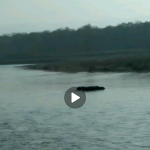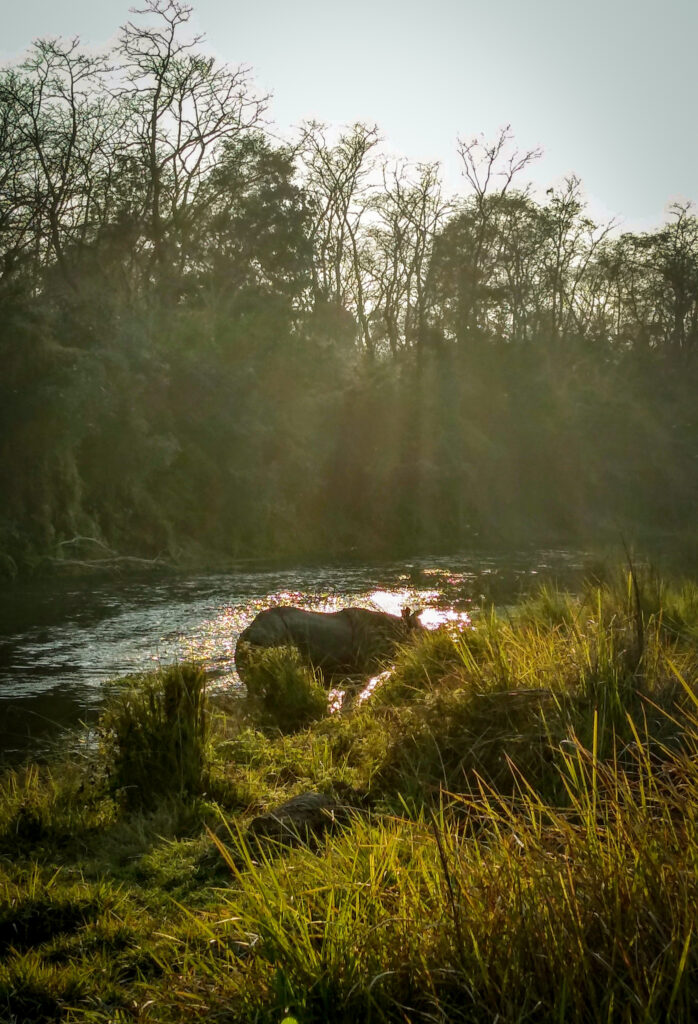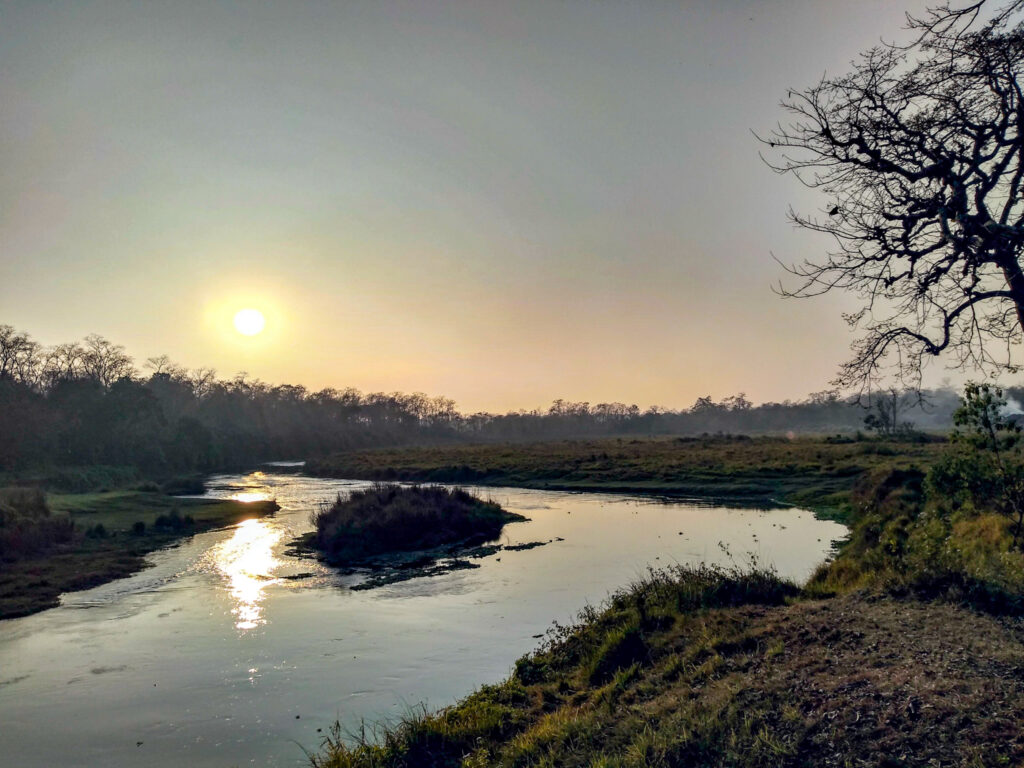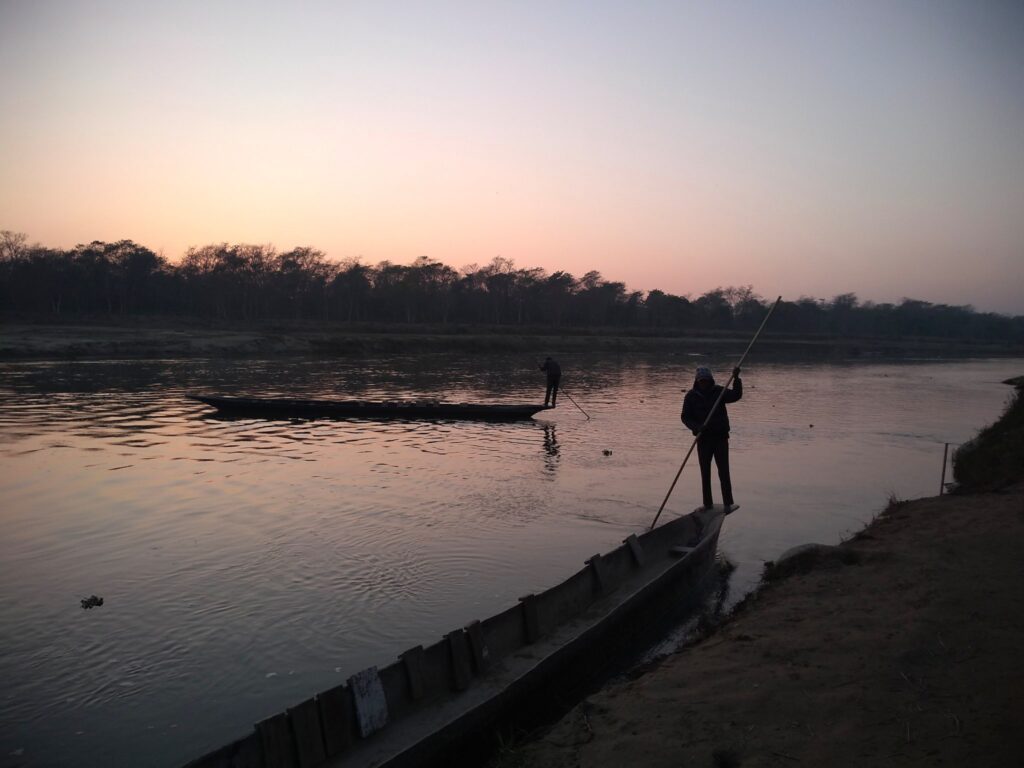“Home to one of the last populations of single-horned Asiatic rhinoceros”.

Where is Chitwan?
The district of Chitwan is one of 77 districts of Nepal. It is located in the southwestern part of Bagmati Pradesh with Bharatpur, the second largest city of Nepal after Kathmandu, as its district headquarters.
Best known as the home of Nepal’s first national park, Chitwan National Park. The park supports some rare species including Bengal tigers, gharials, rhinoceros, leopards, mugger crocodiles, Indian rock python, and several species of deer.
Chitwan is protected by a battalion of the Nepal Army and patrolled by anti-poaching units.
Getting there
Our journey from Pokhara to Chitwan was on the tourist bus.
Our accommodation
Whilst in Chitwan, we chose to stay at The jungle Wildlife Camp, booked through Booking.com. Only a 15-minute walk from the lively Tandi Bazaar and a 5 minute walk into Malpur Road, lined with restaurants and cafes.
Our cosy top floor room with ensuite came with toiletries, air conditioning and TV. It has an on site restaurant and breakfast was included.


The tour desk arranged our onward bus to Kathmandu for us. They provided a convenient pick up and drop off service to the local bus stop at Sauraha bus station as well. On arrival, they take you on a walking safari, see below for more details of our walking safari adventure.
Restaurants and Cafes
Friends Cafe
This place was great. The service was magnificent and the food fresh and tasty.
Greasy Spoon Restaurant
The ambience here is really good and the service was outstanding. Good quality and tasty food, sadly the wine was disappointing. We ordered a glass of Sauvignon Blanc or so we thought. The wine we received was definitely not a Sauvignon Blanc. Especially the branded one from the drinks menu we had chosen. The manager insisted that it was.
Places of interest
Walking sightseeing tour
Our accommodation offered a complimentary sightseeing walking tour as part of our stay. Departing at 1500 hrs, the tour was amazing, lasting over 3 hours. Our guide took us along the Bank of the Rapti River, pointing out the extensive wildlife along the way.

This included a White Throated Kingfisher, a Hornbill, Pond Herons, Darters, Egrets, and Parakeets to name those we can remember. Adjacent to the river there were a couple of elephant sanctuaries.
It was very sad to see the elephants separated and chained up. Even though their surroundings are beautiful. Neither of us approved of them being tied up. Constantly swaying from side to side, they looked stressed. We wanted to move on quickly and let our guide know this. He told us that during the day they are taken into the jungle by their mahouts.


Basking in the sun on the opposite side of the riverbank were 3 Mugger crocodiles and a Gharial crocodile.

But the best was yet to come. Further along, the riverbank was a rhinoceros, grazing at the water’s edge. A huge 2.5-ton armour plated, grass eating tank with a dangerous looking spike on the end of its nose only 30 feet away from us.
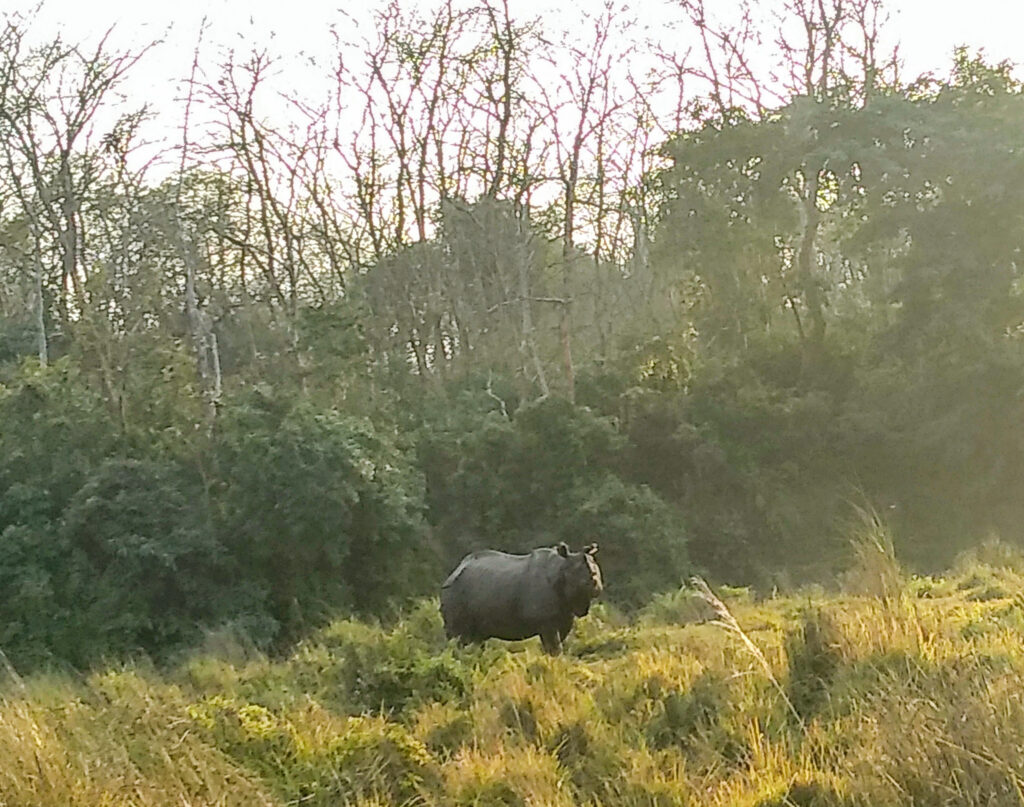


Its behind you
As the light started to fade the White Spotted Deer were emerging from the jungle, coming down to the water’s edge to drink in safety under the cover of darkness.

Half day jeep safari
The next day we opted for a half-day jeep safari into the jungle organised by our hotel. Hoping to catch a glimpse of more wild animals, especially another rhino. However, its never guaranteed. An early start the safari lasted 4 hours and cost 4200 Rupees each, 2000 of which were the National Park entry fee.
The trip
We started with a short canoe crossing of the Rapti River at Sauraha, complete with crocodiles sunbathing on the sand. From the canoe, there was a 200m walk across the sand to get to the jeep.

Each jeep seated 12 people. We had been given the heads up to sit at the front, as you get the full attention of the guide, so that’s where we sat.

Passing through jungle and grasslands, with elephant grass about 8ft high. Wildlife spotting was a little difficult.
The guide knew his stuff and pointed out copious amounts. Including- Crocodiles, White Egrets, Purple Herons, Bulbuls, Darters, Cormorants, Storks, Peacocks, Monitor lizard, Wild Boar, Rhinoceros, Monkeys, Hornbill, and Spotted Deer. But alas NO TIGERS.


 Rhinoceros footprint
Rhinoceros footprint




